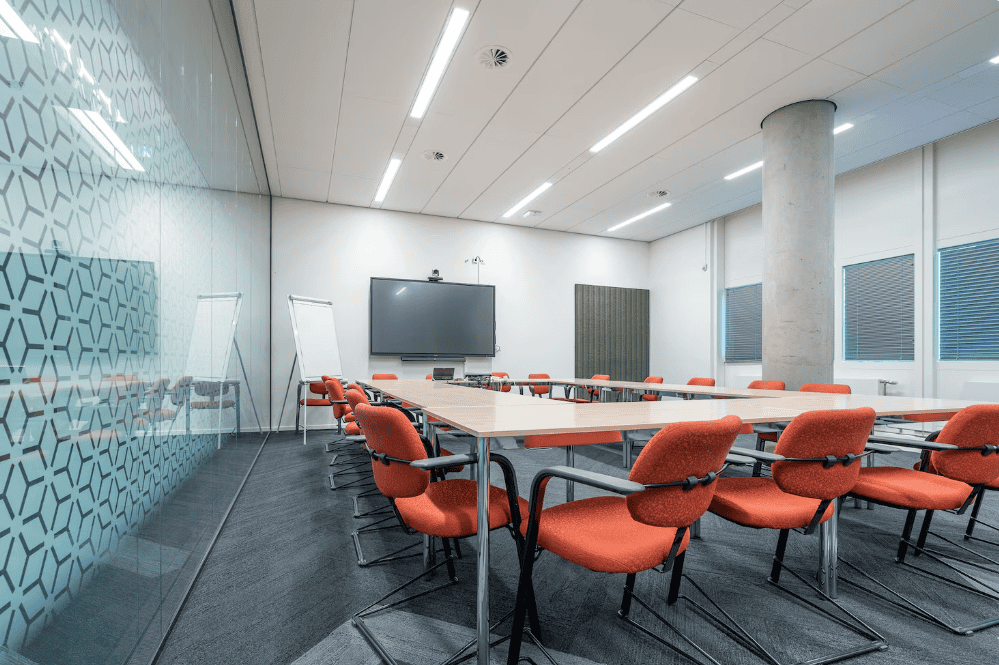Table of Contents
A well-designed office isn’t just about aesthetics or furniture placement. The sound environment plays a crucial role in employee comfort, focus, and productivity. This is where acoustic design comes in—shaping how sound travels and is absorbed within a workspace to create a balanced atmosphere that enhances well-being and efficiency.
What Is Acoustic Design?
Acoustic design refers to the intentional management of sound within a space. It involves using materials, layouts, and structures to control how sound reflects, travels, and fades. In office settings, acoustic design reduces unwanted noise and improves clarity, ensuring people can concentrate, collaborate, and communicate effectively.
Benefits of Acoustic Design in Offices

Improved Focus and Productivity
One of the biggest distractions in offices is noise—whether it’s conversations, ringing phones, or air conditioning hums. Excessive background noise can reduce focus and increase stress.
By incorporating acoustic panels, carpeting, and sound-absorbing materials, businesses can minimize distractions. Employees can work more efficiently and maintain concentration for longer periods, leading to measurable productivity gains.
Enhanced Communication and Collaboration
Open-plan offices encourage collaboration, but without proper acoustic treatment, they often amplify sound instead of supporting teamwork.
With acoustic zoning, partitions, and sound-masking systems, employees can hold discussions without disturbing others. Meeting rooms equipped with sound insulation also make virtual calls and brainstorming sessions clearer, supporting both in-person and hybrid work setups.
Reduced Stress and Fatigue
Constant exposure to noise pollution can lead to fatigue and even burnout. Acoustic design helps maintain a balanced sound environment where the background hum is low and speech remains intelligible.
This balance reduces mental strain, allowing employees to feel calmer and more comfortable throughout the day. A quieter workspace often translates to better overall morale and job satisfaction.
Professional Impression for Clients
Sound quality affects how professional an environment feels. When clients walk into an office where noise is controlled, conversations are clear, and there’s no echo or disruption, it creates an immediate sense of credibility and care.
In boardrooms or conference areas, proper acoustic design ensures presentations, pitches, and video meetings sound clear and polished, leaving a strong first impression.
Support for Hybrid and Digital Work

Modern offices rely heavily on digital communication. Whether it’s Zoom calls, webinars, or hybrid meetings, audio clarity is essential. Poor acoustics can cause echo, feedback, and fatigue during virtual discussions.
Acoustic panels, ceiling baffles, and soft furnishings absorb sound waves, making voices clearer and reducing reverberation—crucial for maintaining effective communication in mixed work environments.
Privacy and Confidentiality
In offices that handle sensitive discussions—like HR departments or client meeting rooms—sound leakage can be a concern. Acoustic insulation materials and door seals help maintain privacy, ensuring conversations stay within the intended space.
This improves trust and compliance, especially in industries like law, finance, or healthcare.
Energy Efficiency and Design Harmony
Acoustic materials often double as insulation, helping regulate temperature and reduce energy costs. Additionally, modern acoustic panels come in stylish textures, colors, and patterns that enhance visual appeal without compromising performance.
By blending function and design, companies can achieve both comfort and sustainability in their workspace.
Building a Sound Workplace
Investing in acoustic design isn’t just about reducing noise—it’s about creating an environment that supports human focus, comfort, and connection. In the US, where open offices and shared coworking spaces are increasingly common, integrating sound management early in the design process can make a lasting difference in both productivity and well-being.
